한식 읽기 좋은 날
Vol 48. Food for Good Health
The Wish for Safety and Well-Being is the Same Even When the Shape and Taste are Different ─ A Story of Food Wishing for Good Health That is Unique to Each Region
Tasty Road
In Korea, due to the distinct four seasons and the diverse topography of the mountains, seas, and plains, each region has its own local food that contains a unique environment, culture, and skill.
Let's take a look at the table setting for the first full moon day of the new year, which reflects the individuality of each region in the food eaten, while wishing for the health of all family members and the prosperity of the community.
Reference. Rural Development Administration
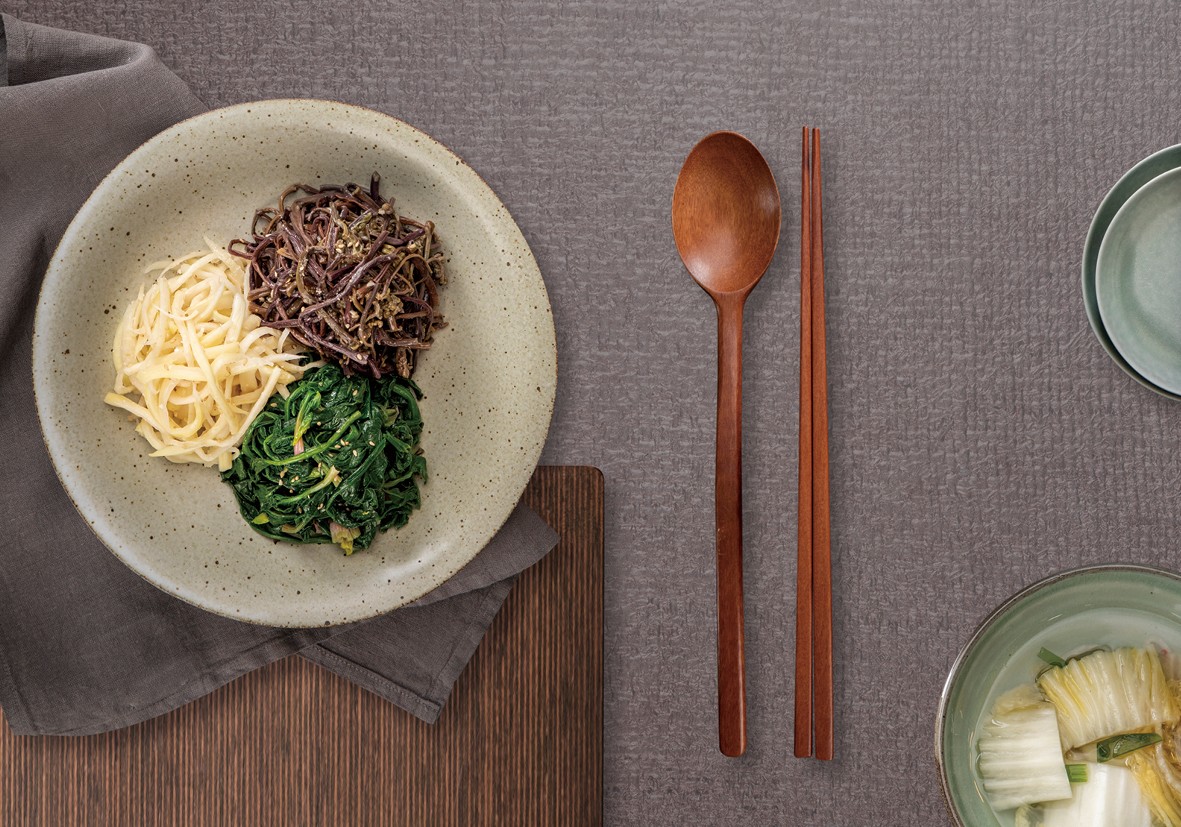
Byeotseom Mandu from Icheon, Gyeonggi-do, Wishing for Five Blessings
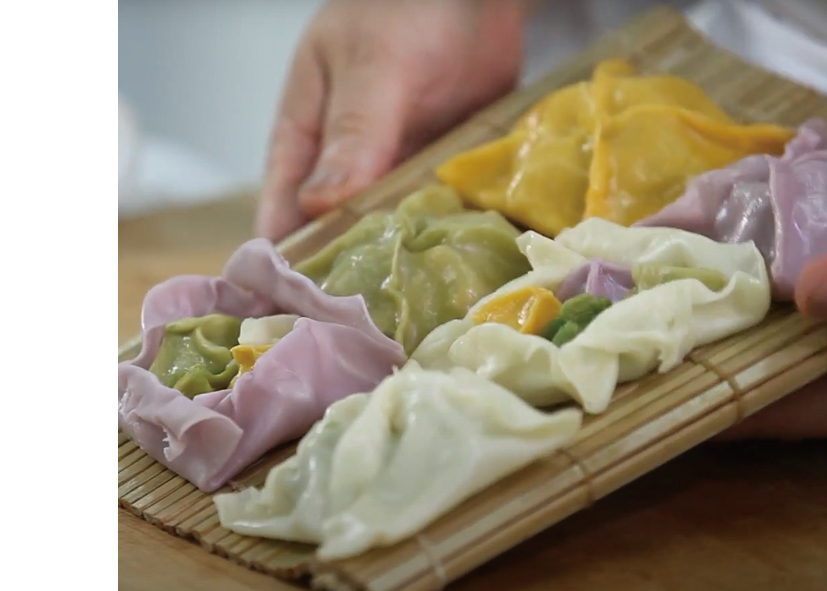 The fatty rice was served on the king's royal table. Icheon, Gyeonggi-do is the hometown of rice farming with the pride of producing high-quality rice for the king’s table. There is a special dumpling dish that can only be tasted in Icheon, the home of rice. The square shape looks like a square rice sack, and its name is “byeotseom mandu(rice sack dumpling).” It is common to make a thin dumpling skin, fill it full with the stuffing, and make it into a round shape by putting both edges together or forming an elongated shape. However, byeotseom mandu is characterized by putting the four corners of the dumpling skin together in the center. As the name suggests, it is modeled after a rice sack. In Icheon, there has been a long-held custom of collecting leftover food on the first full moon day of the year to make and eat byeotseom mandu. This contains the wishes of the local people in Icheon, praying for the granary to be filled with rice like byeotseom mandu, for a good harvest.
The fatty rice was served on the king's royal table. Icheon, Gyeonggi-do is the hometown of rice farming with the pride of producing high-quality rice for the king’s table. There is a special dumpling dish that can only be tasted in Icheon, the home of rice. The square shape looks like a square rice sack, and its name is “byeotseom mandu(rice sack dumpling).” It is common to make a thin dumpling skin, fill it full with the stuffing, and make it into a round shape by putting both edges together or forming an elongated shape. However, byeotseom mandu is characterized by putting the four corners of the dumpling skin together in the center. As the name suggests, it is modeled after a rice sack. In Icheon, there has been a long-held custom of collecting leftover food on the first full moon day of the year to make and eat byeotseom mandu. This contains the wishes of the local people in Icheon, praying for the granary to be filled with rice like byeotseom mandu, for a good harvest.
Another characteristic is making the dough with five colors. It must have been as cumbersome as the labor of preparing the holiday table in the past and nowadays. However, they did not think of this as hard labor because they made it with the devotion of “filling the five-color pouch with five blessings.” The five blessings refer to the blessings considered desirable in life: longevity, wealth, health, virtue, and peaceful death. Our ancestors’ earnest desire for a healthy and happy life for their precious family members makes the table on the first full moon day more abundant.
Photo. Icheon-si blog
Yongbong Jokpyeon from Sunchang, Jeollabuk-do,
A Nutritious Dish Made with Devotion
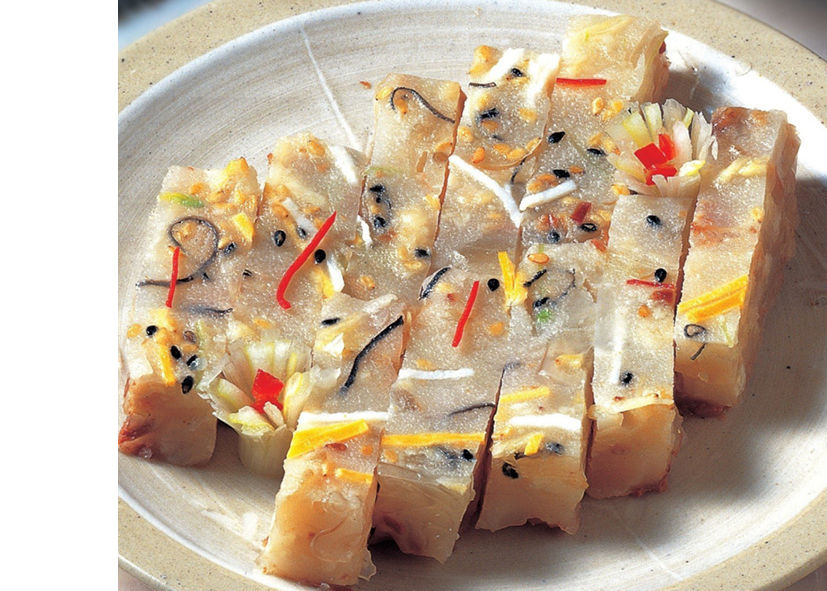 Among different types of meat, our people like beef the most. They indulged in the taste of beef by dividing it in detail to the extent of expressing it as “ildoobaekmi,” meaning “Having 100 tastes from 1 head”. So, they developed a recipe that is suitable for each part. One of them is called “jokpyeon,” and is made by simmering chicken or pheasant meat with ox trotters for a long time so that it hardens like jelly. It was eaten as the first full moon day food in Sunchang, Jeollabuk-do. This dish is called yongbong jokpyeon. The method of making jokpyeon is laborious and quite complicated, as it takes a full day to simmer it over a subtle wood fire. Since it was a demanding dish that required boiling and topping it with garnishes repeatedly, it was rarely eaten except on big events other than the first full moon day or when treating valuable quests. In the court, it was made for banquets, and was called “jokbyeong” or “gyobyeong” as it looked like rice cake. Jokbyeong is a dish that is rich in nutrients, such as collagen, and it boasts of a soft texture and taste. It is made by mixing in chicken or dried cod, and ox trotter and shank are added to make soejokpyeon. It is a dish that further enhances the taste and elegance with the garnishes decorated in five colors. Jokpyeon is served after it is placed outside until it is slightly frozen, and its chewy texture was a delicacy. It is a nutritional dish with plenty of protein and fat, and, because it is soft, it is enjoyed by the elderly and children as well.
Among different types of meat, our people like beef the most. They indulged in the taste of beef by dividing it in detail to the extent of expressing it as “ildoobaekmi,” meaning “Having 100 tastes from 1 head”. So, they developed a recipe that is suitable for each part. One of them is called “jokpyeon,” and is made by simmering chicken or pheasant meat with ox trotters for a long time so that it hardens like jelly. It was eaten as the first full moon day food in Sunchang, Jeollabuk-do. This dish is called yongbong jokpyeon. The method of making jokpyeon is laborious and quite complicated, as it takes a full day to simmer it over a subtle wood fire. Since it was a demanding dish that required boiling and topping it with garnishes repeatedly, it was rarely eaten except on big events other than the first full moon day or when treating valuable quests. In the court, it was made for banquets, and was called “jokbyeong” or “gyobyeong” as it looked like rice cake. Jokbyeong is a dish that is rich in nutrients, such as collagen, and it boasts of a soft texture and taste. It is made by mixing in chicken or dried cod, and ox trotter and shank are added to make soejokpyeon. It is a dish that further enhances the taste and elegance with the garnishes decorated in five colors. Jokpyeon is served after it is placed outside until it is slightly frozen, and its chewy texture was a delicacy. It is a nutritional dish with plenty of protein and fat, and, because it is soft, it is enjoyed by the elderly and children as well.
Photo. <Our Beautiful Local Dishes> by Chung Jaehong
Jinnamul from Goheung, Jeollanam-do To Prepare for the Summer Heat
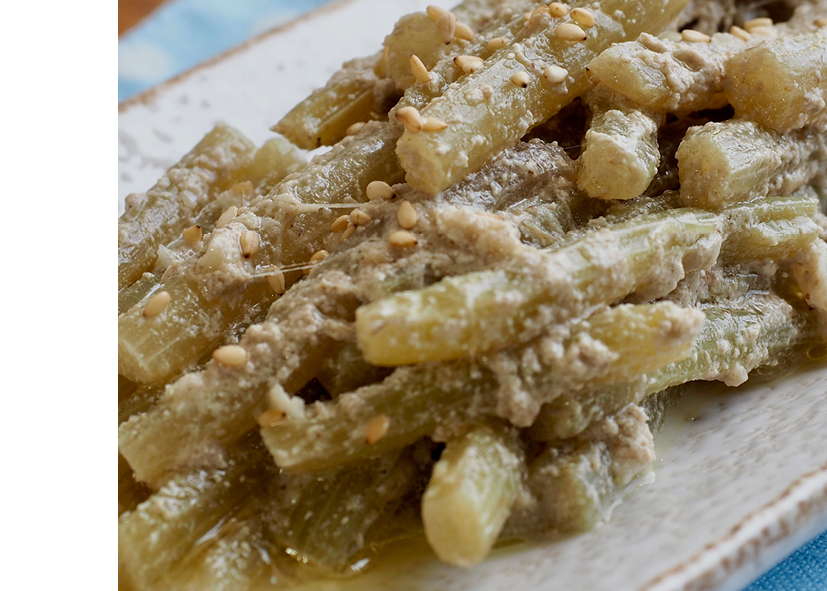 In Jeollanam-do, as in other regions, on the morning of the first full moon day, each family holds an ancestral rite and sets a separate table for their deities. They also set up a table in a barn or shed, and pray for the year’s abundance. At this time, the table is set with ogokbap and seasoned vegetables, such as bracken, taro stem, radish, zucchini, mushroom, etc., but the namul(seasoned vegetables) dish is different from the common jinchaesik. In Goheung, instead of serving soup, they make jinnamul in lieu of soup. Jinnamul is made by squeezing the water out, seasoning them, pouring water to barely cover it, boiling them, and adding perilla seed powder and rice powder. The perilla seed powder brings out the nuttiness, while the rice powder makes it hearty.
In Jeollanam-do, as in other regions, on the morning of the first full moon day, each family holds an ancestral rite and sets a separate table for their deities. They also set up a table in a barn or shed, and pray for the year’s abundance. At this time, the table is set with ogokbap and seasoned vegetables, such as bracken, taro stem, radish, zucchini, mushroom, etc., but the namul(seasoned vegetables) dish is different from the common jinchaesik. In Goheung, instead of serving soup, they make jinnamul in lieu of soup. Jinnamul is made by squeezing the water out, seasoning them, pouring water to barely cover it, boiling them, and adding perilla seed powder and rice powder. The perilla seed powder brings out the nuttiness, while the rice powder makes it hearty.
The perilla seed powder in jinnamul goes well with taro stem. Unlike taro in taro soup, taro stem is not much used in food, but it is rich in nutrients. According to the Rural Development Administration, taro stem has 3.5 times more beta-carotene, 3.3 times more potassium, and 3.6 times more calcium than taro. Pectin, a water-soluble dietary fiber, in particular, creates a protective film on the colonic mucosa, and prevents the absorption of harmful substances to support intestinal health. If you add perilla seed powder and perilla seed oil to the blanched taro stems and stir-fry them lightly, the unsaturated fatty acids that are lacking in the taro stems are supplemented by the perilla seeds, and the flavor becomes even more pronounced. Jinnamul is a dish that is always present on the table setting on the first full moon day in Jeolla-do, and people seemed to have enhanced the flavor by adding perilla seeds that help with energy recovery and stamina improvement as preparation for the coming summer.
North Korean Full Moon Dishes For Good Back and Teeth Health
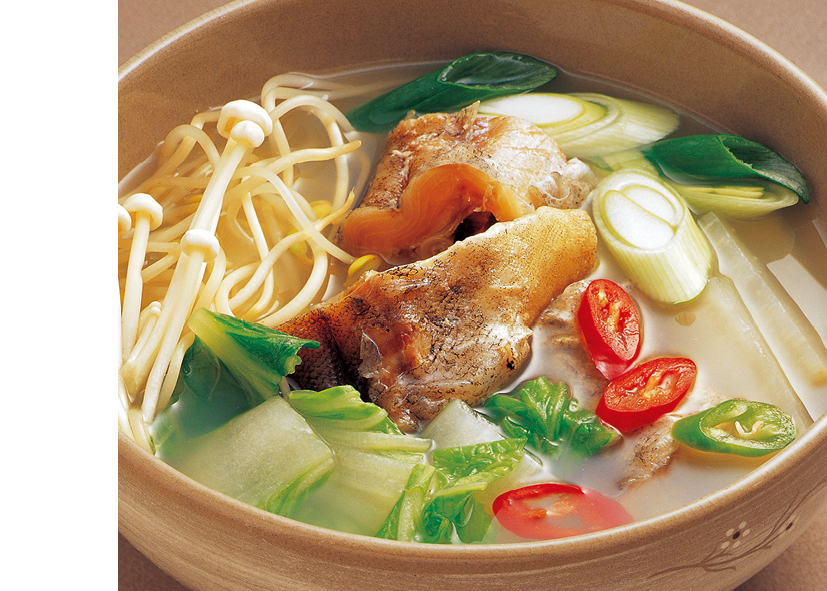 To this day, North Korea has designated the first full moon day of the new year as a public holiday, and is celebrated in a grand and meaningful way. Ogokbap and mugeunnamul are similar to our table. However, it is a little different to cook rice with grains that are readily available in the region, such as barley and corn, which are not included in the five grains, in addition to red beans. As for the namul side dishes, nine types of local vegetables are prepared to make the table rich. Moreover, there are some things that the locals eat on the first full moon day, and one of them is pollack. There is a long-standing belief that eating pollack on the first full moon day will stretch the eater’s spine, straighten the back, and brighten the eyes, so there is always a pollack dish on the table of the first full moon day.
To this day, North Korea has designated the first full moon day of the new year as a public holiday, and is celebrated in a grand and meaningful way. Ogokbap and mugeunnamul are similar to our table. However, it is a little different to cook rice with grains that are readily available in the region, such as barley and corn, which are not included in the five grains, in addition to red beans. As for the namul side dishes, nine types of local vegetables are prepared to make the table rich. Moreover, there are some things that the locals eat on the first full moon day, and one of them is pollack. There is a long-standing belief that eating pollack on the first full moon day will stretch the eater’s spine, straighten the back, and brighten the eyes, so there is always a pollack dish on the table of the first full moon day.
Pollack contains minerals such as calcium, phosphorus, and iron, and is effective in preventing osteoporosis. It is low in fat and high in protein compared to other types of fish, making it an ideal food to boost one’s immunity in the winter. Thus, during the first full moon holidays in North Korea, the price of pollock almost doubles. This is also not much different from our holiday market scene. There is another thing that seems to be similar and different to us. In North Korean households, there is a custom of making gangyeot(black taffy) flat, leaving it outside to be frozen, and breaking and eating it as bureom like we do with nuts on the morning of the first full moon day. We could find humanity's long-standing belief that biting something hard makes the teeth strong and healthy is also part of the North Korean holiday scene.










